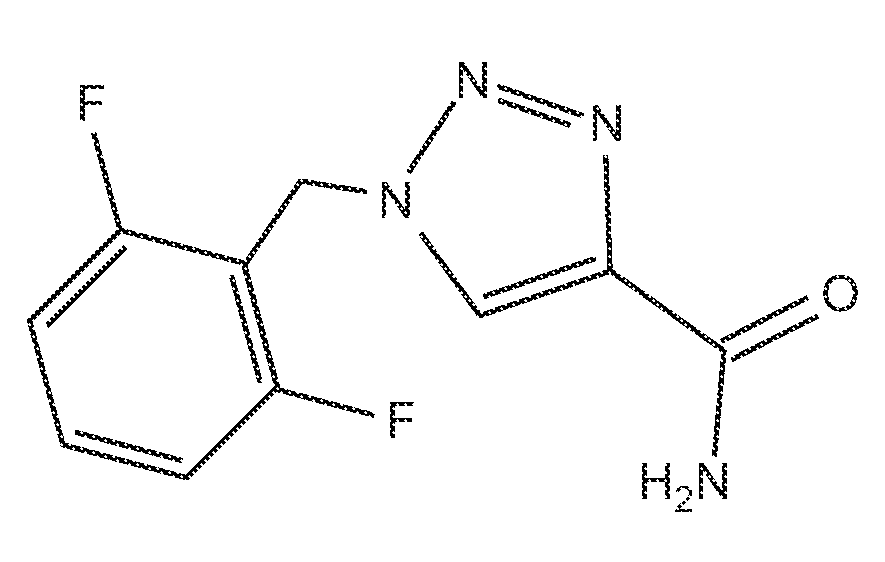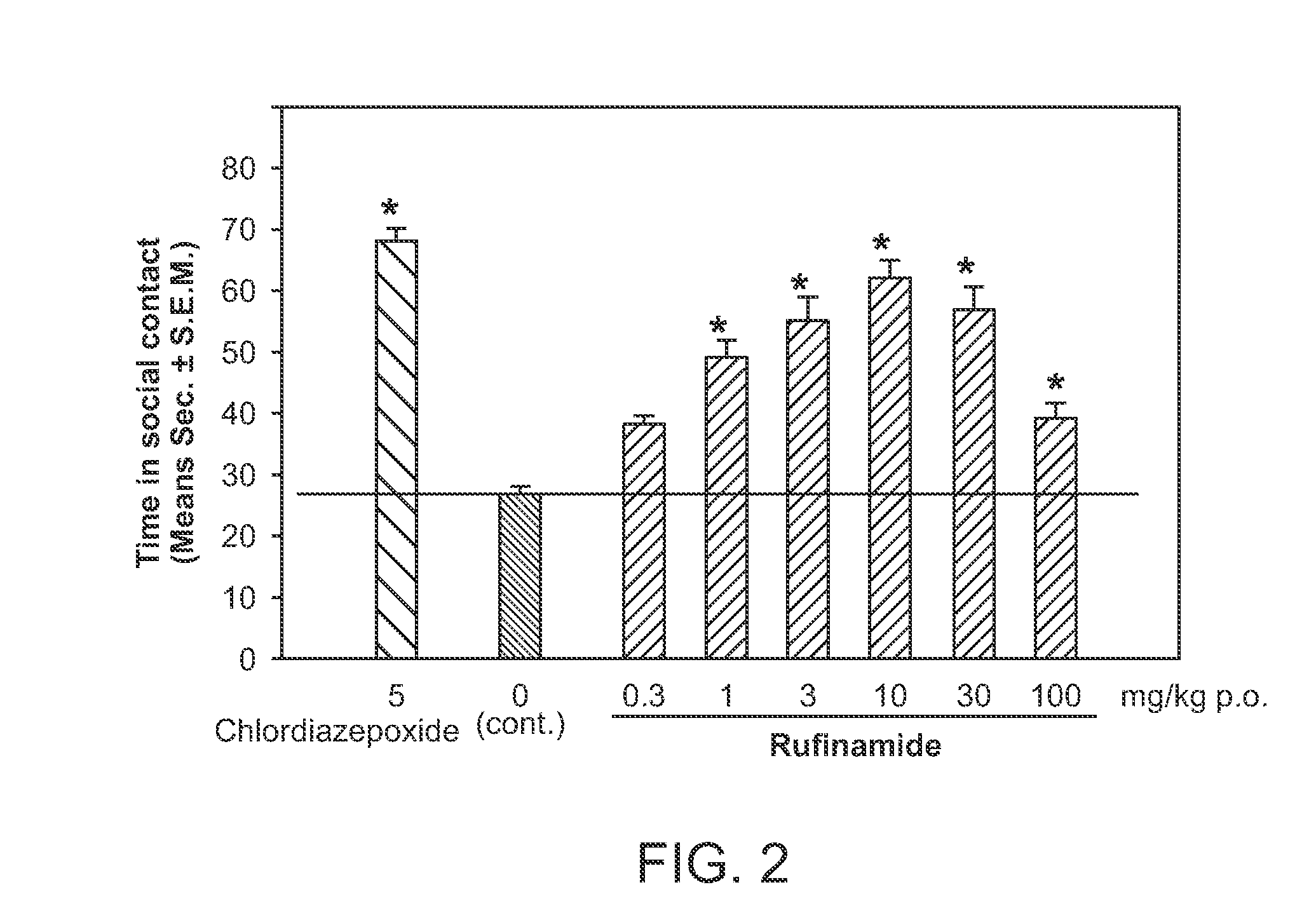Rufinamide for the Treatment of Post-Traumatic Stress Disorder
a post-traumatic stress disorder and rufinamide technology, applied in the field of methods for treating post-traumatic stress disorder, can solve the problems of preventing a return to normal life, low patient tolerance, unwanted side effects and characteristics, etc., and achieves the effects of reducing kindling, improving post-traumatic stress disorder, and reducing inciden
- Summary
- Abstract
- Description
- Claims
- Application Information
AI Technical Summary
Benefits of technology
Problems solved by technology
Method used
Image
Examples
example 1
[0185]A clinical study is performed to demonstrate the efficacy and tolerability of rufinamide in the treatment of post-traumatic stress disorder (PTSD).
[0186]The research design includes an 8-week randomized, double-blind, placebo-controlled treatment trial of rufinamide for the treatment of PTSD.
[0187]After signing an informed consent and meeting inclusion / exclusion criteria, the patient is randomized to receive either rufinamide or placebo for the 8-week duration. Patients' symptoms, side effects and compliance is assessed bi-weekly.
[0188]Based on symptomotology and occurrence of side effects, the investigator may increase the medication in 200-400 mg increments, as tolerated, until a maximum therapeutic benefit is achieved, not to exceed 45 mg / kg / day. The dosing is once per day unless twice per day is better tolerated. Compliance is assessed by pill count at week 4 and week 8.
[0189]Efficacy is measured by the following assessment scales:[0190]Global Assessment of Functioning (GA...
example 2
[0223]A clinical study is performed to demonstrate the efficacy and tolerability of rufinamide in the prevention of PTSD.
[0224]The research design includes an open-ended randomized, double-blind, placebo-controlled treatment trial of rufinamide for the prevention of PTSD. After signing an informed consent and meeting inclusion / exclusion criteria, patients are randomized to receive either rufinamide versus placebo for the 8-week duration. Patients' symptoms, side effects and compliance are assessed bi-weekly.
[0225]Based on symptomatology and occurrence of side effects, the investigator can increase the medication in 200-400 mg increments, as tolerated, until a maximal tolerated dose is achieved, not to exceed 45 mg / kg / day The dosing is once per day unless twice per day is better tolerated. Compliance is assessed by pill count at week 4 and week 8.
[0226]Efficacy is measured by the following assessment scales:[0227]Global Assessment of Functioning (GAF)[0228]Clinician Administered PTSD...
example 3
[0262]A clinical study is conducted to demonstrate the efficacy and tolerability of rufinamide combination therapy in the treatment of PTSD.
[0263]The research design includes an 8-week randomized, double-blind, placebo-controlled treatment trial of rufinamide for the treatment of PTSD. After signing an informed consent and meeting inclusion / exclusion criteria, the patient is randomized to receive either rufinamide or placebo for 8-week duration. Patients can also receive therapeutically effective doses of prazosin, valproate, carbamazepine, or topiramate in combination with rufinamide or placebo.
[0264]During the study a pharmacist maintains the randomization log and verifies the order for the placebo or rufinamide in look-a-like tablets. Patients' symptoms, side effects and compliance is assessed bi-weekly. Based on symptomatology and occurrence of side effects, the investigator increases the medication in 200-400 mg increments, as tolerated, until a maximum therapeutic benefit is a...
PUM
| Property | Measurement | Unit |
|---|---|---|
| Frequency | aaaaa | aaaaa |
| Reactivity | aaaaa | aaaaa |
| Stress optical coefficient | aaaaa | aaaaa |
Abstract
Description
Claims
Application Information
 Login to View More
Login to View More - R&D
- Intellectual Property
- Life Sciences
- Materials
- Tech Scout
- Unparalleled Data Quality
- Higher Quality Content
- 60% Fewer Hallucinations
Browse by: Latest US Patents, China's latest patents, Technical Efficacy Thesaurus, Application Domain, Technology Topic, Popular Technical Reports.
© 2025 PatSnap. All rights reserved.Legal|Privacy policy|Modern Slavery Act Transparency Statement|Sitemap|About US| Contact US: help@patsnap.com



